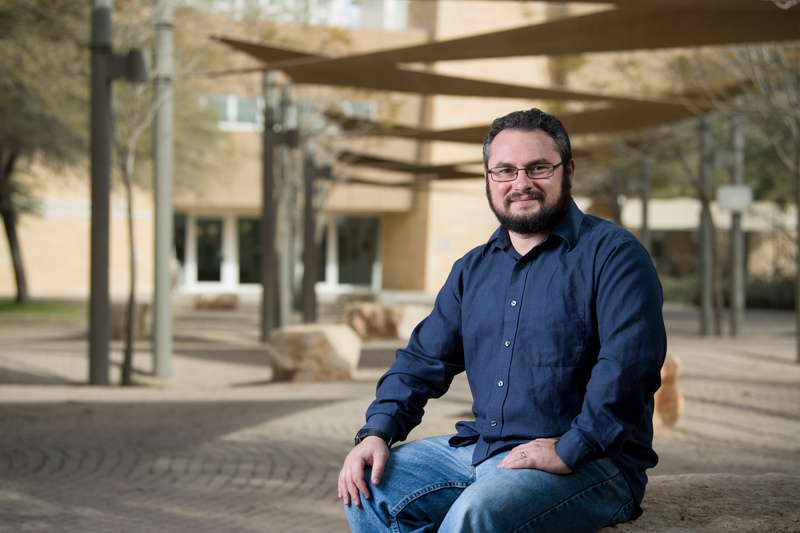Tumor-specific antibody therapy, with an antibody known as 'Herceptin' or 'Trastuzumab', has been incorporated into breast-cancer treatments since the late nineties. The target for this therapy, human epidermal growth factor receptor 2 (HER2), is a cell surface molecule that, when amplified, drives an intracellular signal for cancer cell proliferation leading to aggressive cancer progression. By binding to HER2, the therapeutic antibody acts through several mechanisms: it inhibits the intracellular proliferative signal transmitted through HER2 and it can also recruit 'natural killer' white blood cells that attack the cancer cells. The new study highlights an additional mechanism that can be unleashed through combination therapy.
A typical course of therapy with anti-HER2 antibodies results in an initial response and tumor shrinkage that too often is followed by a relapse of treatment-resistant cancer cells. Importantly, in many cases, the resistant cells still retain HER2 on their surface but acquire additional mutations that sustain signaling and inhibit the killer cells.
A new study by Stanford University with a BGU researcher, just published in the prestigious journal PNAS (Proceedings of the National Academy of Sciences), shows a way to harness yet another mechanism of action of anti-HER2 antibody therapy that recruits a different type of white blood cells called 'scavenger macrophages' that can swallow and digest harmful cells. Macrophages are naturally programmed to recognize and eliminate cancer cells and are further activated by specific anti-tumor antibodies such as Trastuzumab. However, as Irving Weissman and colleagues discovered about a decade ago, all cancers have a way to evade this layer of immunity by increasing the levels of a cell surface molecule called CD47 which acts as an inhibitory 'don't eat me' signal for macrophages. Blocking CD47 reduces the checkpoint inhibition of scavenger macrophages thus allowing them to 'eat' and eradicate cancer cells more efficiently. The blocking anti-CD47 antibody used in this research, Magrolimab, is currently in clinical development.

By combining CD47 blockade with anti-HER2 therapy, the investigators were able to further activate macrophages to eliminate HER2-positive breast cancer. “This increased eating by macrophages was observed even when the tumor cells were already resistant to the effect of anti-HER2 antibodies alone, even in the presence of natural killer cells" explains Dr. Benyamin Rosental (pictured above), a Ben-Gurion investigator who participated in the research. The augmented effect of the combination therapy with anti-HER2 and anti-CD47 was achieved because as long as the HER2 molecule was still present on the surface of the cancer cells, the anti-HER2 antibodies can act as activating adaptors between the macrophage and the cancer cell, and the anti-CD47 antibodies release the inhibition of macrophages and increase the elimination of the cancer cells. “This study sheds light on the immunological mechanisms of action of anti-HER2 antibody therapy and opens new therapeutic possibilities", says Rosental.
“We hope that the study will pave the way to clinical trials combining anti-CD47 with anti-HER2 in breast cancer therapy" says Dr. Tal Raveh, a Stanford scientist and a coauthor on the paper. “CD47 blockade adds yet another modality of engaging innate immunity to anti-HER2 antibody therapy that we anticipate will increase the efficacy of this standard treatment". Such trials may initially be offered primarily to women whose tumors became unresponsive to anti-HER2, and eventually as a first line therapy for HER2-positive breast cancer.
Combining CD47 blockade with trastuzumab eliminates HER2+ breast cancer cells and overcomes trastuzumab tolerance
Rosalynd Upton1, Allison Banuelos1, Dongdong Feng1, Tanuka Biswas1, Kevin Kao1, Kelly McKenna1, Stephen Willingham1, Po Yi Ho1, Benyamin Rosental2, Michal Caspi Tal1, Tal Raveh1, Jens-Peter Volkmer1, Mark D. Pegram3*, Irving L. Weissman1*
* Co-senior authors, either of whom can list their name last on their bibliography or communications
Author affiliations:
1 Institute for Stem Cell Biology and Regenerative Medicine, and Ludwig Center for Cancer Stem Cell Research, Stanford University, Stanford, CA
2 The Shraga Segal Department of Microbiology, Immunology, and Genetics, Faculty of Health Sciences, and Regenerative Medicine and Stem Cell Research Center, Ben Gurion University of the Negev.
3 Department: Medicine - Med/Oncology, Stanford Cancer Center, Stanford, CA
The study was supported byThe NIH/NCI Outstanding Investigator Award (R35CA220434 to I.L.W.), an F31 award to U. R., the Israel Science Foundation (ISF) award to B.R. #1416/19., a Mary Kay Foundation grant to MP (#177853), and by the D.K. Ludwig Fund for Cancer Research.